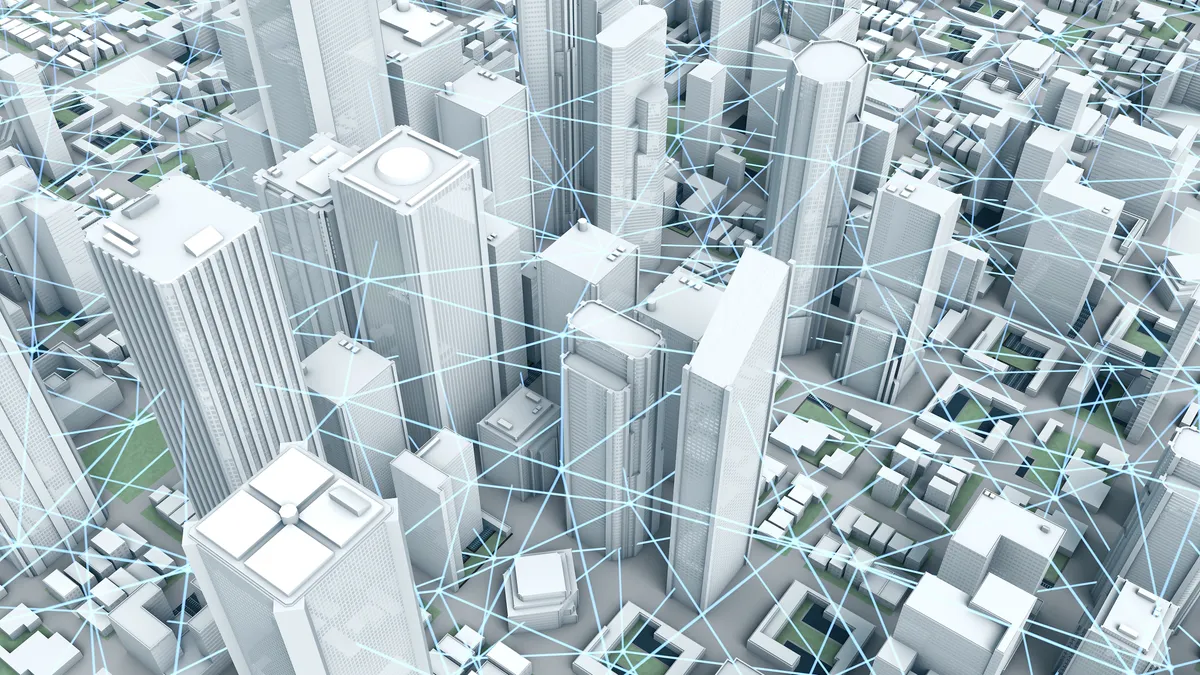Dive Brief:
- Over 40% of Baltimore households (96,000) lacked wired access to internet in 2018 through cable, fiber or another service, according to a study released last week by the Abell Foundation. The study also found that one in three households (75,000) lack a desktop or laptop computer.
- The report analyzed internet access in 33 cities, including Washington, DC, Philadelphia and those known for being tech hubs like Boston, Seattle and San Jose, CA. Baltimore ranked 29th for home wired broadband adoption, preceding Milwaukee, Cleveland, Memphis, TN and Detroit. Wireline broadband adoption grew three times faster in the other cities examined than in Baltimore from 2016 to 2018.
- To combat the slow progress in closing the digital divide, researchers said local leaders and other stakeholders should work together to prioritize delivering devices to low-income households, especially those with school-age children. The report also says institutions like libraries and nonprofits should be given more resources to provide access and digital skills training, in addition to recommending a greater emphasis on digital equity in city government.
Dive Insight:
The report sheds a stark light on the digital divide in Baltimore, which affects low-income households and communities of color the most. The Abell Foundation found that while 73.3% of White households in Baltimore have wired internet service, only 50.2% of Black households and 46.4% of Hispanic households have the same. Meanwhile, just 33.8% of low-income residents have wired internet service compared to 83% of households with an annual income over $75,000.
City leaders have made some strides, the report said, but it urged them to do more. It praised the Baltimore City Council and Mayor Bernard Young to use $3 million from the city’s Children and Youth Fund on laptops and increased internet access. And it said the creation of the Baltimore Digital Equity Coalition, which brings together 50 organizations to work on closing the digital divide, "shows promise in further expanding the range of stakeholders addressing Baltimore’s access gaps."
COVID-19 has brought into focus the continuing issue of digital equity and access in the United States, and it is no different in Baltimore. With students and many residents working remotely, some have been forced to spend more money on mobile data, while the Wi-Fi hotspots opened up by telecoms companies do not cover certain neighborhoods. A 2018 survey of West Baltimore residents indicated that many want expanded Wi-Fi networks, believing that would put the city on a path to being smarter.
Meanwhile, cities like San Francisco have tackled the digital divide during the pandemic with Wi-Fi "SuperSpots" for the thousands of students without internet access at home. The 25 SuperSpots are installed in parts of the city with high concentrations of demand, with each location capable of providing internet access for up to 100 users. And Hopewell, VA is putting its students online by retrofitting 31 school buses with wireless routers to provide Wi-Fi access to the nearly 1,000 students without reliable internet at home.
The American Library Association has also recommended that the country's libraries provide 24-7 Wi-Fi access for patrons during the pandemic.
The unequal deployment of internet has caught the attention of Congress and the federal government, however. In late April, the Federal Communications Commission (FCC) released a report that found that less than 18 million people now lack broadband access, although that report has been chided for poor methodology and is subject to a revamp. As cities look to close the digital divide and improve residents' digital skills, the report says Baltimore has a long way to go before it can close those access gaps.












